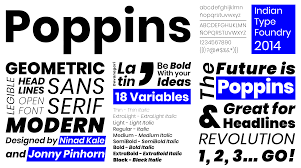Google Fonts: A Versatile Tool for Elevating Web Design
Introduction
In the realm of web design, typography plays a crucial role in conveying a brand's identity, enhancing readability, and improving the overall user experience. Google Fonts, a free library of open-source fonts, offers a wide range of typographic options to elevate web design projects. This white paper explores the benefits of using Google Fonts in WordPress, Joomla, Magento, and Liferay, providing practical use cases and best practices.
The Power of Google Fonts
Google Fonts offers a plethora of advantages for web designers and developers:
- Wide Range of Fonts: Access a vast library of high-quality fonts, from classic to modern, to suit various design styles.
- Easy Integration: Seamlessly integrate Google Fonts into your website using a simple code snippet.
- Performance Optimization: Google Fonts are optimized for web performance, ensuring fast loading times.
- Cross-Browser Compatibility: Ensure consistent typography across different browsers and devices.
- Open-Source and Free: Utilize these fonts without any licensing fees.
Using Google Fonts in Popular CMS Platforms
WordPress
- Plugin-Based Integration: Use plugins like "Easy Google Fonts" or "WP Google Fonts" for easy integration.
- Manual Integration: Add the Google Fonts CSS link directly to your theme's header.php file.
- Use Cases:
- Create a unique brand identity with custom typography.
- Improve readability and user experience.
- Enhance the overall visual appeal of your WordPress website.
Joomla
- Extension-Based Integration: Install extensions like "Easy Google Fonts" or "DJ-Extensions - Google Fonts" to add Google Fonts.
- Manual Integration: Add the Google Fonts CSS link to your template's index.php file.
- Use Cases:
- Customize the appearance of your Joomla website.
- Improve the accessibility of your website by using clear and readable fonts.
- Create a professional and polished look for your Joomla-based website.
Magento
- Theme Customization: Modify your theme's CSS files to include Google Fonts.
- Extension-Based Integration: Use extensions like "Google Fonts" to simplify the process.
- Use Cases:
- Enhance the visual appeal of your online store.
- Improve brand recognition and customer experience.
- Optimize your website for mobile devices with responsive typography.
Liferay
- Theme Customization: Modify your theme's CSS files to include Google Fonts.
- Hook-Based Integration: Use Liferay's hook mechanism to inject Google Fonts into your theme.
- Use Cases:
- Create a consistent and professional look for your Liferay portal.
- Improve the readability and user experience of your portal's content.
- Enhance the overall branding of your organization.
Best Practices for Using Google Fonts
- Choose Fonts Wisely: Select fonts that are easy to read and complement your website's design.
- Limit Font Choices: Avoid using too many different fonts to maintain consistency.
- Optimize Font Loading: Use font display properties to control font loading and rendering.
- Test Across Devices and Browsers: Ensure your website looks great on all devices and browsers.
- Consider Font Weights and Styles: Use a variety of font weights and styles to create visual hierarchy and emphasis.
Conclusion
By effectively utilizing Google Fonts, you can elevate your web design projects to new heights. By following the best practices outlined in this white paper, you can create visually appealing, user-friendly, and brand-consistent websites.
References
- Google Fonts: https://fonts.google.com/
- Joomla: https://www.joomla.org/
- Liferay: https://www.liferay.com/



